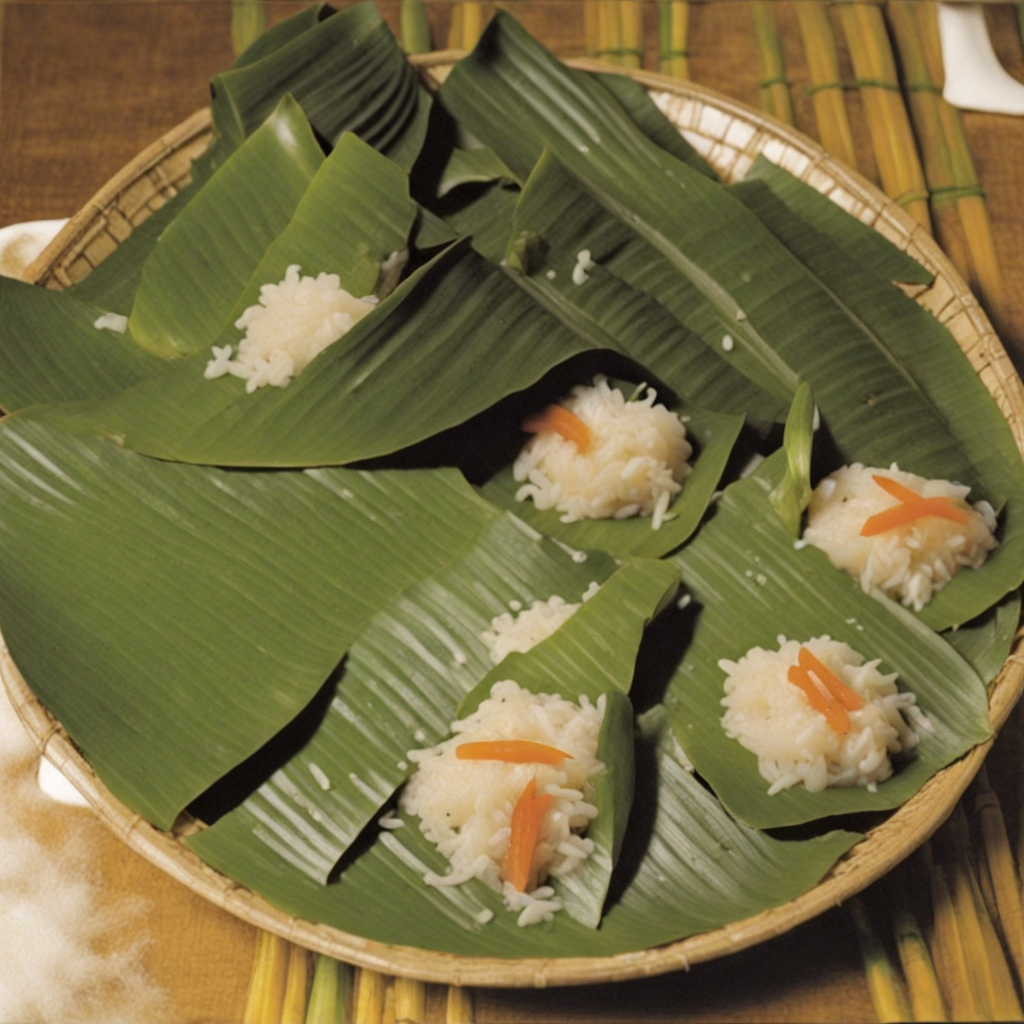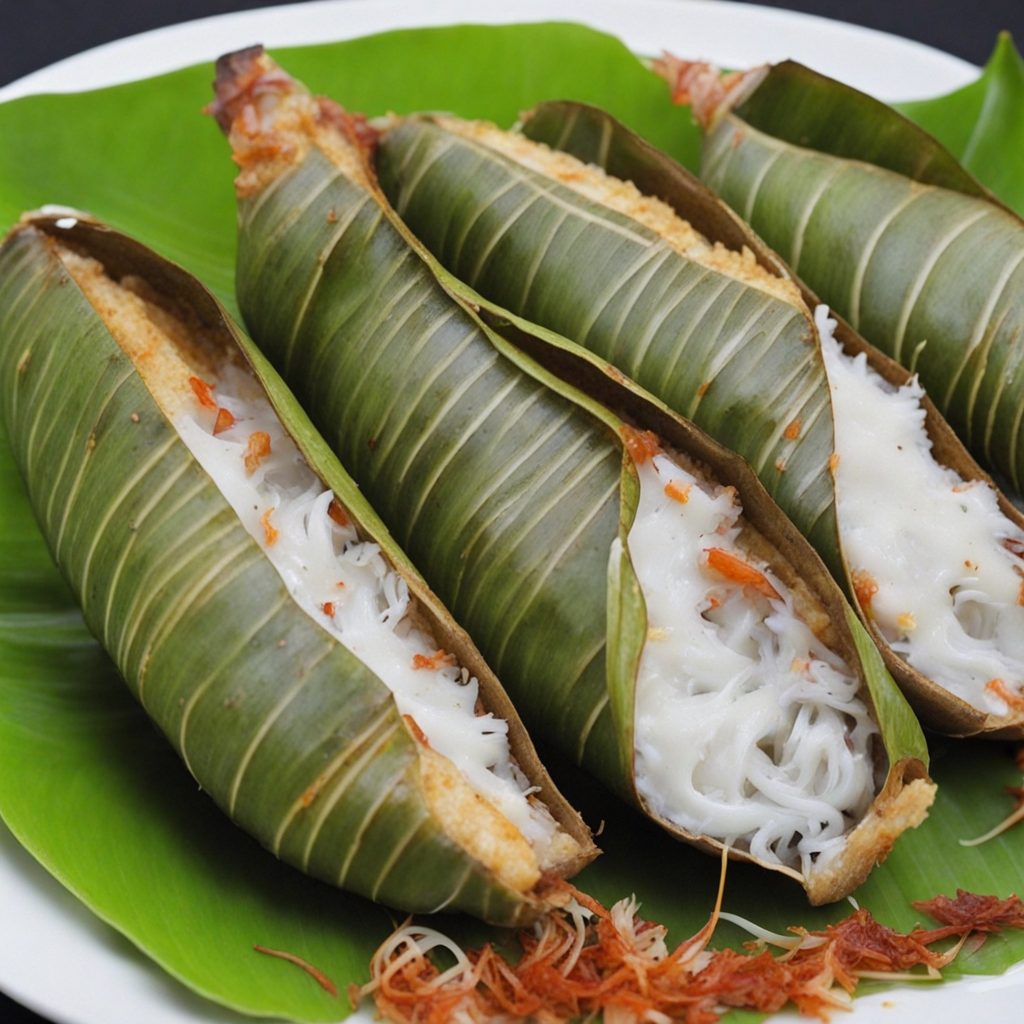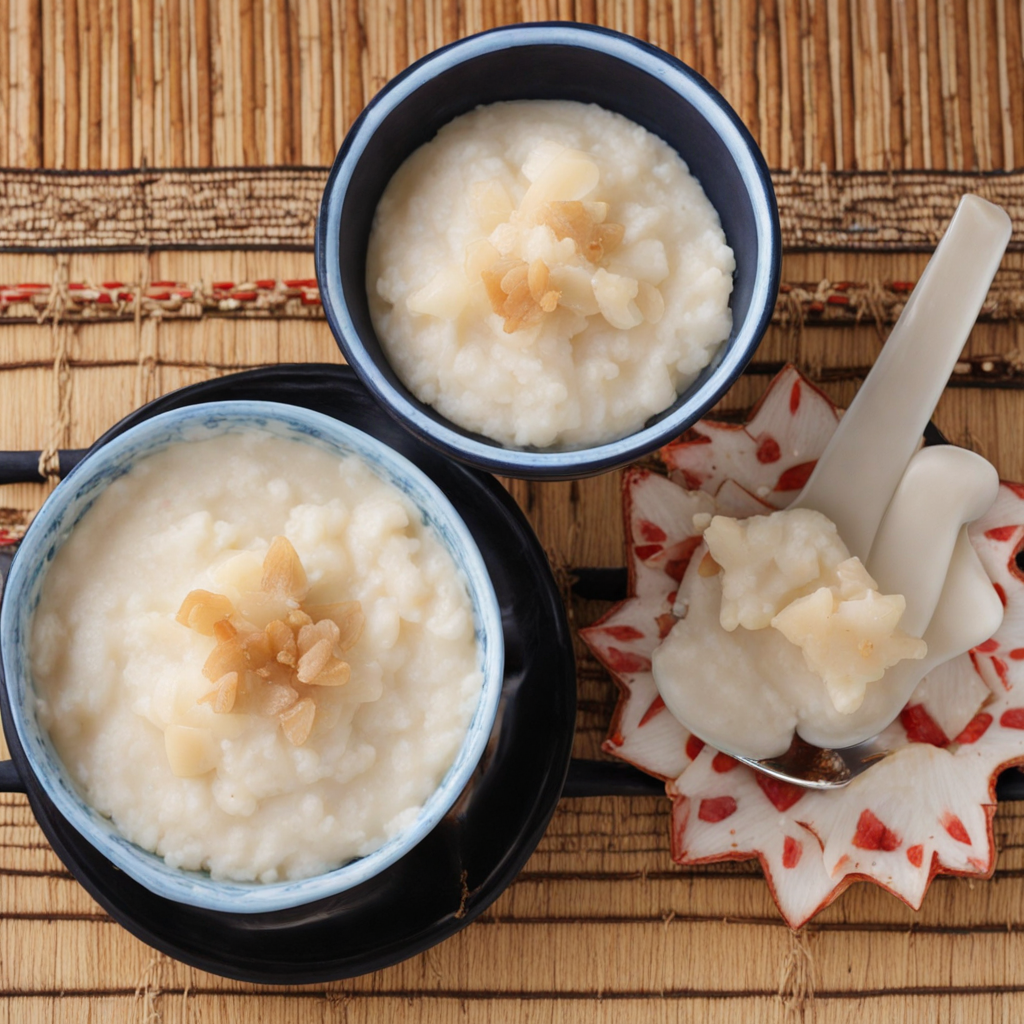Lu'au
Lu'au is a traditional Samoan dish that beautifully showcases the rich flavors and vibrant ingredients of the Pacific Islands. At its core, Lu'au is made from young taro leaves, which are tender and packed with nutrients. These leaves are often cooked slowly in coconut milk, allowing them to absorb the creamy, sweet essence of the coconut while softening to a melt-in-your-mouth texture. The dish is typically flavored with a variety of seasonings, including onions, garlic, and sometimes even chili peppers, creating a harmonious blend that tantalizes the taste buds. The preparation of Lu'au can vary, but it often incorporates a protein element, such as taro root, pork, or fish. When pork is used, it is usually cooked in an underground oven called an 'umu', which infuses the meat with a smoky flavor and keeps it incredibly tender. The combination of the savory pork, the rich coconut milk, and the earthy taro leaves makes for a satisfying and wholesome meal. In some variations, the dish may also include other local vegetables, enhancing its nutritional value and adding different textures to each bite. Served with a side of rice or as part of a larger feast, Lu'au is more than just a dish; it is a cultural experience that brings people together. The vibrant green of the taro leaves, the creamy white of the coconut milk, and the rich, golden tones of the meat create a visually appealing plate that invites you to dig in. Each mouthful offers a delightful balance of flavors, making Lu'au a must-try for anyone looking to explore the culinary traditions of Samoa and the unique tastes of Polynesian cuisine.
How It Became This Dish
The History of Lu'au: A Culinary Tradition of Samoa #### Origins of Lu'au Lu'au, a traditional Samoan feast, is not just a meal; it is a cultural celebration that embodies the essence of Samoan hospitality, community, and identity. The term “lu'au” originally referred to the tender young leaves of the taro plant, which are essential in the preparation of various Samoan dishes. Over time, however, the term has evolved to encompass the entire celebratory feast itself, which showcases the rich culinary heritage of Samoa. The roots of lu'au can be traced back to the early Polynesian navigators who settled in Samoa over 3,000 years ago. These early inhabitants brought with them a wealth of agricultural knowledge, cultivating staple crops such as taro, breadfruit, and coconut. Taro, in particular, became a central ingredient not only for its nutritional value but also for its cultural symbolism. The leaves of the taro plant, once harvested, were often used in cooking and food preparation, laying the groundwork for the modern interpretation of lu'au. #### Cultural Significance Lu'au is much more than just a feast; it is a vital aspect of Samoan culture and tradition. It serves as a focal point for gatherings, including weddings, birthdays, and significant community events. The preparation and sharing of food are considered acts of love and respect, reinforcing the bonds of family and community. In Samoan society, food is a powerful symbol of status, generosity, and social cohesion. The lu'au feast is typically characterized by a communal spirit, where family members and friends come together to prepare the meal. This collaboration is integral to the lu'au experience; it fosters a sense of belonging and reinforces social ties. The preparation of lu'au is often a multi-day process that involves the entire family, from selecting ingredients to cooking and serving the food. Traditionally, the lu'au is served on a mat, where guests sit together, symbolizing equality and togetherness. This communal dining experience challenges the notions of individualism often seen in Western cultures, highlighting instead the importance of community and shared experience in Samoan life. #### The Preparations: A Feast of Flavors The preparation of lu'au involves a variety of ingredients, with taro leaves being a star player. One of the most iconic dishes served at a lu'au is "palusami," which consists of taro leaves wrapped around a mixture of coconut cream and sometimes fish or meat. The dish is usually cooked in an underground oven called an “umu,” where stones are heated and then covered with food, allowing it to steam and infuse with rich flavors. In addition to palusami, other traditional dishes may include "oka," a raw fish salad marinated in coconut cream and citrus juice; "fa'alifu fa'i," which are steamed bananas in coconut milk; and various preparations of taro and breadfruit. Meat dishes, particularly pork, are also central to the feast, often marinated and cooked in a way that highlights the island's resources. The lu'au is not just about the food; it is also about the presentation. The vibrant colors of the dishes, the fragrant aromas, and the artistic arrangement on the mat create a feast for the senses. The act of serving and sharing food is accompanied by traditional songs and dances, further enriching the cultural experience. #### Development Over Time As Samoa has evolved, so has the lu'au. The arrival of European explorers, missionaries, and traders in the 18th and 19th centuries introduced new ingredients and cooking techniques, influencing traditional Samoan cuisine. Items such as chicken, beef, and rice, which were not native to Samoa, have found their way into lu'au menus, showcasing the adaptability and resilience of Samoan culinary traditions. In contemporary Samoa, lu'au continues to play a significant role in social and cultural life, but it has also become a means of cultural exchange. The global interest in Polynesian culture has led to the commercialization of lu'au, particularly in the tourism sector. Many resorts and cultural centers offer lu'au experiences that showcase traditional Samoan food, dance, and music, catering to both locals and tourists. While some may view this commercialization as a dilution of tradition, many Samoans see it as an opportunity to share their culture with a wider audience. The lu'au has become a platform for cultural preservation, allowing Samoan people to celebrate their heritage while engaging with the world beyond their shores. In recent years, there has also been a renewed interest in sustainable practices within Samoan cuisine, reflecting a global trend toward environmental consciousness. Many families are returning to traditional farming methods, emphasizing the importance of locally sourced ingredients, which enhances the quality and authenticity of lu'au. #### Conclusion Lu'au is more than a meal; it is a vibrant tapestry of history, culture, and community that reflects the spirit of the Samoan people. From its origins in ancient Polynesian agriculture to its contemporary significance in social gatherings, lu'au embodies the essence of Samoan identity. As the world continues to change, so too does the lu'au, adapting while remaining rooted in tradition. Whether enjoyed in a family home or showcased for visitors, the lu'au remains a vital expression of Samoan hospitality and communal life. It is a celebration of not only food but also the stories, traditions, and legacies that connect generations of Samoans. In the rich flavors of palusami, the communal sharing of food, and the joyous songs and dances, lu'au captures the heart of a culture that values connection, respect, and love—an enduring reminder of the power of food to bring people together.
You may like
Discover local flavors from Samoa







